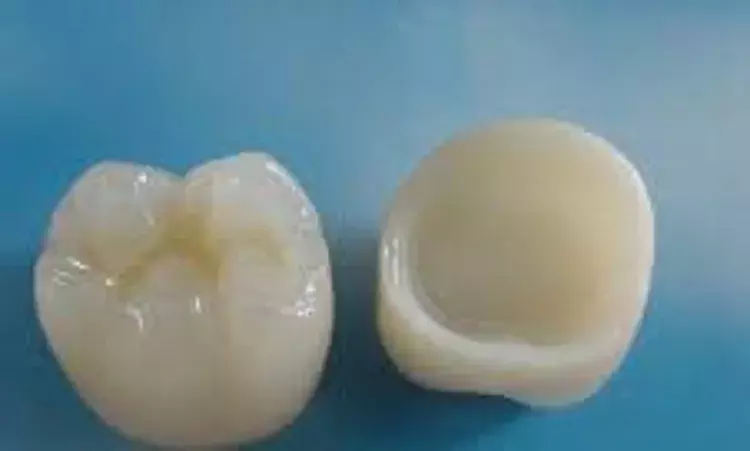- Home
- Medical news & Guidelines
- Anesthesiology
- Cardiology and CTVS
- Critical Care
- Dentistry
- Dermatology
- Diabetes and Endocrinology
- ENT
- Gastroenterology
- Medicine
- Nephrology
- Neurology
- Obstretics-Gynaecology
- Oncology
- Ophthalmology
- Orthopaedics
- Pediatrics-Neonatology
- Psychiatry
- Pulmonology
- Radiology
- Surgery
- Urology
- Laboratory Medicine
- Diet
- Nursing
- Paramedical
- Physiotherapy
- Health news
- Fact Check
- Bone Health Fact Check
- Brain Health Fact Check
- Cancer Related Fact Check
- Child Care Fact Check
- Dental and oral health fact check
- Diabetes and metabolic health fact check
- Diet and Nutrition Fact Check
- Eye and ENT Care Fact Check
- Fitness fact check
- Gut health fact check
- Heart health fact check
- Kidney health fact check
- Medical education fact check
- Men's health fact check
- Respiratory fact check
- Skin and hair care fact check
- Vaccine and Immunization fact check
- Women's health fact check
- AYUSH
- State News
- Andaman and Nicobar Islands
- Andhra Pradesh
- Arunachal Pradesh
- Assam
- Bihar
- Chandigarh
- Chattisgarh
- Dadra and Nagar Haveli
- Daman and Diu
- Delhi
- Goa
- Gujarat
- Haryana
- Himachal Pradesh
- Jammu & Kashmir
- Jharkhand
- Karnataka
- Kerala
- Ladakh
- Lakshadweep
- Madhya Pradesh
- Maharashtra
- Manipur
- Meghalaya
- Mizoram
- Nagaland
- Odisha
- Puducherry
- Punjab
- Rajasthan
- Sikkim
- Tamil Nadu
- Telangana
- Tripura
- Uttar Pradesh
- Uttrakhand
- West Bengal
- Medical Education
- Industry
Zirconia crowns provide acceptable level of success and longevity: study

Zirconia crowns provide an acceptable level of success and longevity, as per a new study published in the International Journal of Dentistry.
Dental treatment under general anaesthesia is often the only means to manage very young children with extensive dental caries. It has been estimated that up to 80% of children who are treated under general anaesthesia are below 4 years of age.
This study aimed to retrospectively evaluate the success of zirconia crowns placed in the anterior teeth of children and evaluate the impact of pulp therapy of the tooth on the rate of failure.
A total of 70 anterior teeth of 20 children aged between 3 and 5 years who had undergone the placement of zirconia crowns under general anesthesia were followed up for 24 months. Kaplan–Meier Survival curves were plotted for the estimation of two-year survival time. The outcomes for teeth that had received pulp therapy were compared to those that had not received pulp therapy.
The Results of the study are as follows:
Kaplan–Meier survival analysis of 70 crowns observed over a two-year period showed that mean survival time for the crowns was 38.7 months with a confidence interval ranging from 38.1 months to 39.3 months. When the survival of the crowns was observed based on the presence or absence of symptoms, it was observed that only 4 out of the 70 crowns were symptomatic (with or without crown loss) at the end of two years, giving a success rate of 94.3%. The mean survival time was also increased to 39.5 months (confidence interval 39.15–39.98 months).
Thus, the researchers concluded that Zirconia crowns provide an acceptable level of success and longevity. Crowns placed on teeth after pulp therapy are more likely to fail than those placed on teeth without pulp therapy.
Reference:
Factors Influencing the Survival of Preformed Zirconia Crowns in Children Treated under General Anesthesia by Abdurahman S. Alhissan and Sharat Chandra Pani published in the International Journal of Dentistry.
Dr. Shravani Dali has completed her BDS from Pravara institute of medical sciences, loni. Following which she extensively worked in the healthcare sector for 2+ years. She has been actively involved in writing blogs in field of health and wellness. Currently she is pursuing her Masters of public health-health administration from Tata institute of social sciences. She can be contacted at editorial@medicaldialogues.in.
Dr Kamal Kant Kohli-MBBS, DTCD- a chest specialist with more than 30 years of practice and a flair for writing clinical articles, Dr Kamal Kant Kohli joined Medical Dialogues as a Chief Editor of Medical News. Besides writing articles, as an editor, he proofreads and verifies all the medical content published on Medical Dialogues including those coming from journals, studies,medical conferences,guidelines etc. Email: drkohli@medicaldialogues.in. Contact no. 011-43720751


